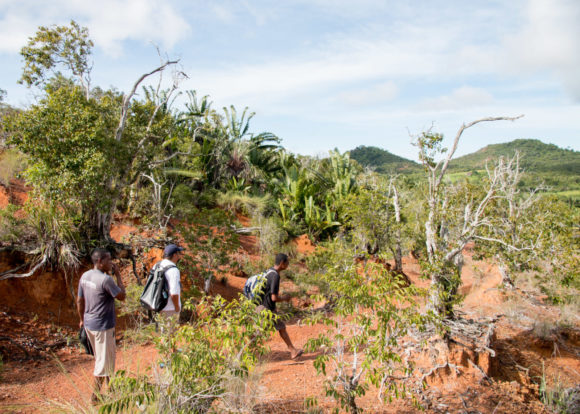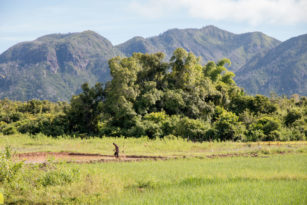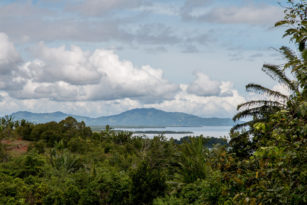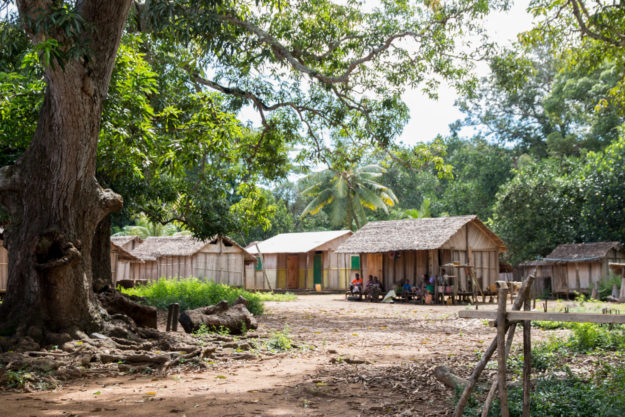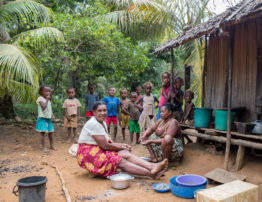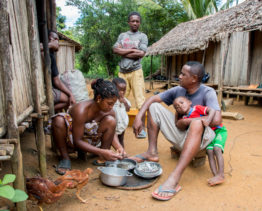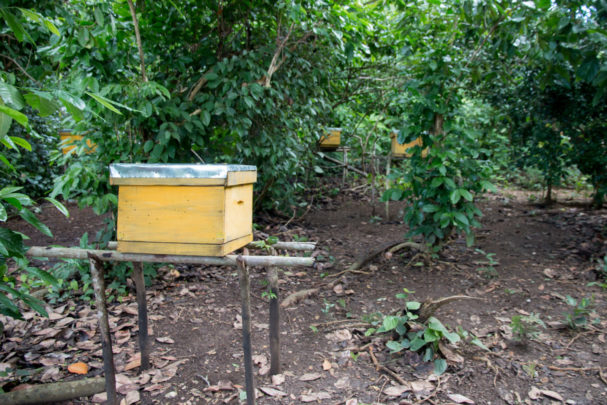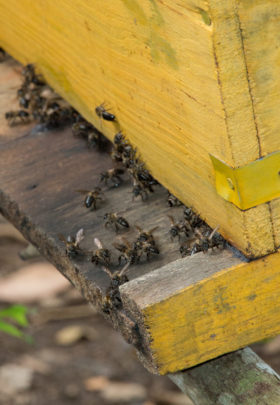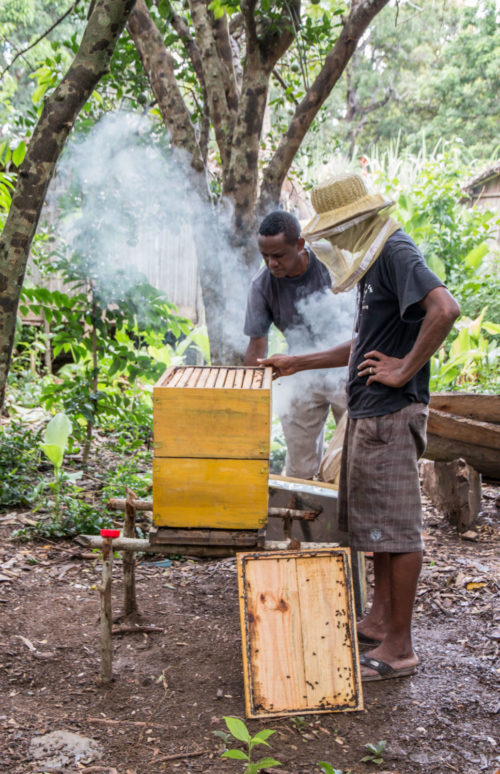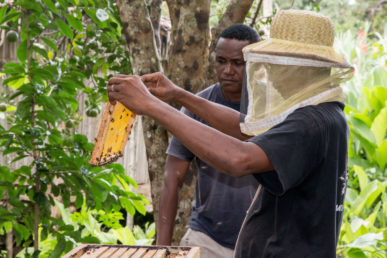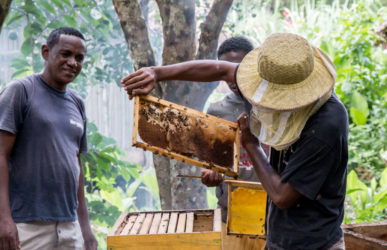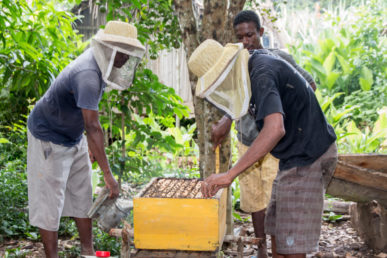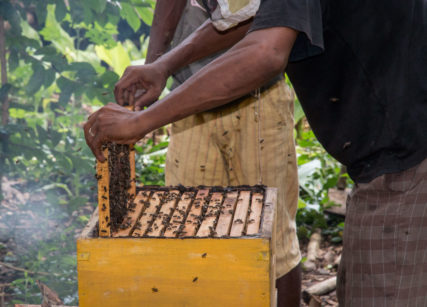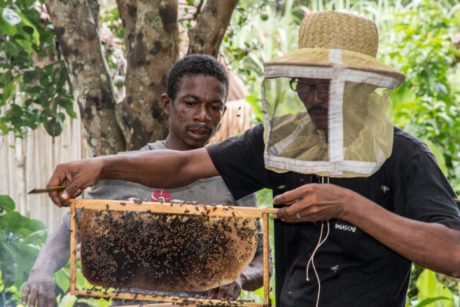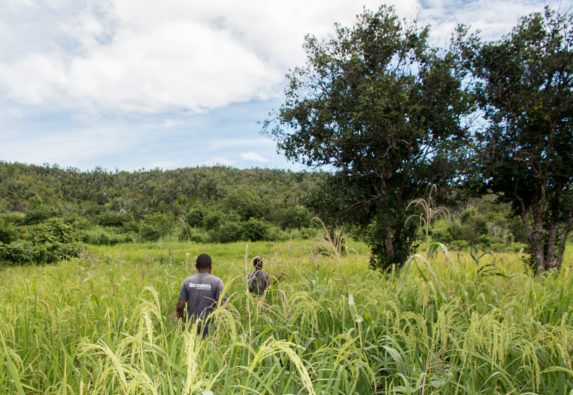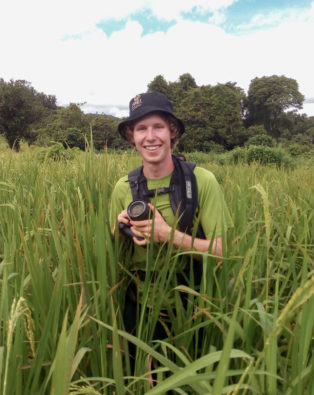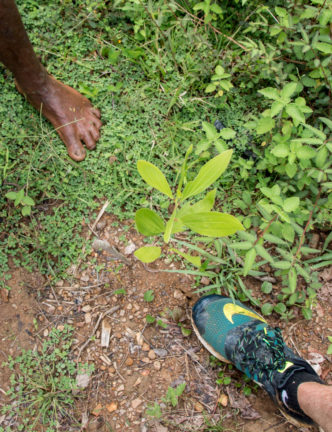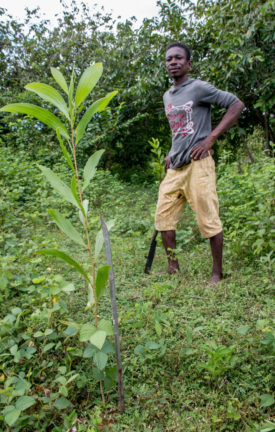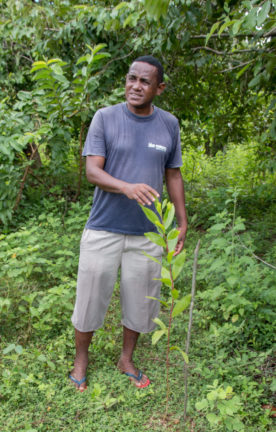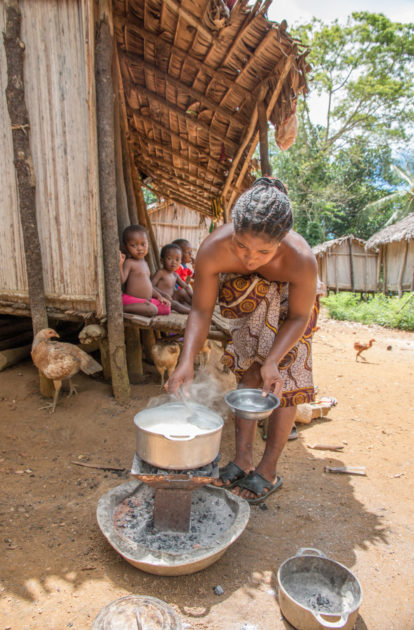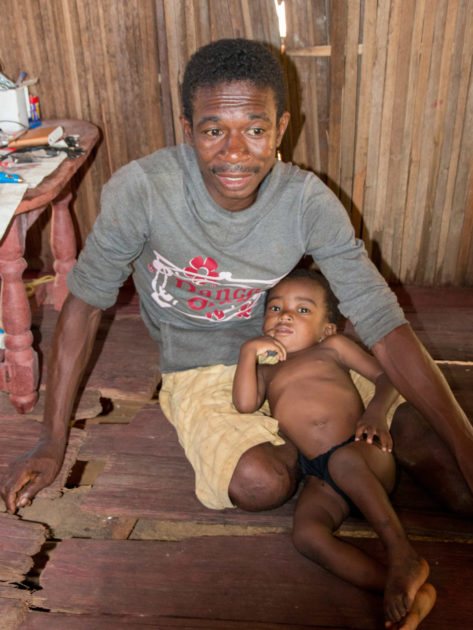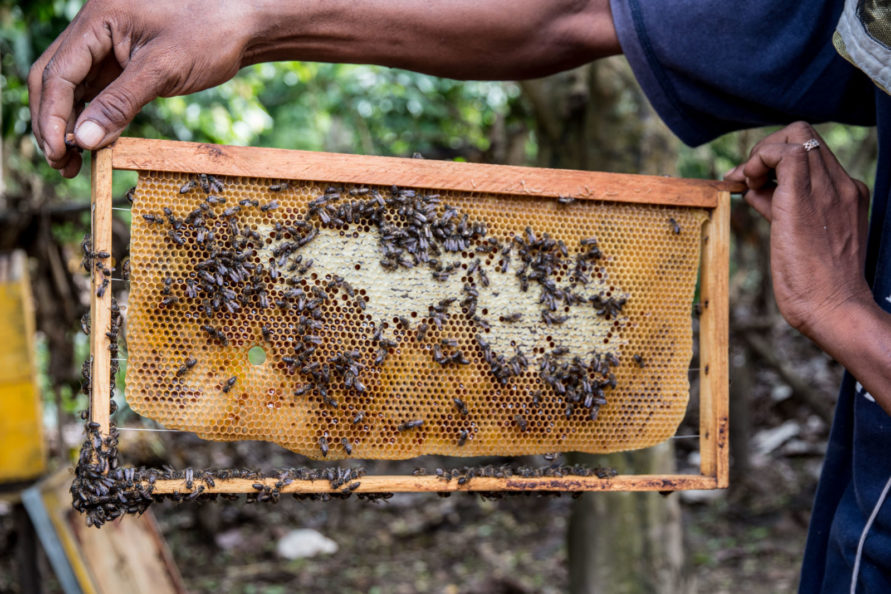It was so humid as we walked under the trees that I could feel sweat dripping off me. I paused to reapply my suncream, but my colleague Dada stopped me.
I wouldn’t do that, the smell of it will agitate the bees. Do not approach the hives from the front either in case they get fierce.”
Nervously, I put away my suncream, hoisted my rucksack, and continued to follow him towards a group of yellow wooden boxes on the outskirts of Ankingabe village.
I recently spent 2 weeks in the city of Ambanja, Blue Ventures’ northernmost base in Madagascar. My three colleagues and I had left the office very early that morning and driven towards the coast until the potholes in the road became so big that our 4 by 4 could go no further. From there it was a two hour cross-country hike to our destination, a small coastal village in the Ambanja bay called Ankingabe. The hike was the perfect chance for me to soak in my beautiful surroundings and ask plenty of questions!
“Over 1,500 hectares of mangroves have been deforested in this area over the last 15 years, mostly to burn for charcoal production” Dada explained to me as we walked.
“Local people are aware that this isn’t sustainable, but making a living is a struggle in such a remote place, so they’ve asked for our help in setting up beekeeping and fuelwood plantation programmes. We have a partner in the private sector called T’Telo who are the only company in Madagascar able to export honey. Mangrove honey is delicious and slightly salty, and T’Telo have committed to buying all the honey produced here.”
So the key aim of these programmes” my colleague Emmanuel summarised for me, “is to take pressure off the mangrove forests and fisheries. Beekeeping provides an alternate income source, and the fuelwood plantations can be used to produce charcoal.”
Eventually we arrived in Ankingabe, where Dada and Emmanuel were both greeted warmly by the villagers. Dada introduced me to Befanony, Ankingabe’s primary beekeeper, and his family, before leading the way through the trees towards the hives.
“These hives were built in a copse of coffee and mandarin trees so that the bees will stay here, even when the mangroves aren’t in bloom” Dada explained to me as we approached. I kept a safe distance as we meandered between the hives, as I could see the bees congregating around their entrances and I was still slightly nervous about the potential effects of my suncream…
As we reached one of the central hives, Dada put on his protective hats and Emmanuel began pumping the sawdust bellows he was carrying. “The smoke helps to keep the bees off us” Dada explained before advancing on the hive. In complete contrast to my trepidation, Emmanuel and Befanony followed him to watch closely as Dada carefully removed the lid, brushed some confused bees out of the way, and began removing the hive racks to study the honeycomb.
My colleague Haja remained to explain the process to me while we watched from a few metres away.
This monitoring process involves checking each rack to see whether the larvae are healthy, whether there’s honey, and whether there are any other bugs like ants that need to be removed. Sometimes you need to remove a second queen so that she isn’t producing rival bees. It’s very important that this process doesn’t take longer than 10 minutes or else the bees will leave! We’re also teaching people here how to trap wild queens so that they can be moved into empty or abandoned hives.”
Watching Dada work was fascinating. He was going through the monitoring process at an impressive pace, but still taking great care to gently move bees out of the way if they were in danger of getting crushed as he removed or replaced the racks. I was so engrossed that I noticed far too late that my legs were covered in mosquitos!
After the hive monitoring was over, Befanony gathered the villagers who were involved in the plantation programme, and we set off through the rice fields to check on its progress. With Haja as my translator, Befanony explained to me why they’d asked Blue Ventures for support with fuelwood plantations.
At the moment, the government is banning us from cutting the mangroves, but we need wood to build our houses and pirogues, and to sell. We know that cutting the mangroves isn’t sustainable, and we are afraid we will go to prison when we do, but with our new plantations we can use the trees for whatever we want.
“There are other benefits too” adds Emmanuel, as we reach the plantation area, “the flowers from these acacia, eucalyptus and lemon trees will hopefully attract more bees, and you can also sell the lemons which are in high demand for lemon chilli, a regional delicacy.”
Emmanuel and Dada studied all the saplings, giving advice on how to optimise their growth, and encouraging the villagers to keep one metre clear around each one to prevent the invasion of wild plants and to decrease fire risk.
On our return to Ankingabe we were invited to stay for a meal with Befanony’s family. Sitting at ease in his house with one of his children on his lap, he told me how his relationship with Blue Ventures began.
“In this village we understand the need to preserve our resources and to start new livelihoods, so we came to Blue Ventures with our need. For us, the beekeeping and fuelwood plantations bring a lot of advantages. The money we get from the honey makes the time spent monitoring the hives worth it. As for the new trees, not only can we do what we want to them without fear, but they also make it easier to keep bees.”
Our relationship with Blue Ventures is very beneficial to this village, and we look to repay their training and support with good work. Hopefully then we can work together on more alternative livelihood opportunities in the future.”
All photos in this blog were taken by Ben Honey.
Find out about alternative livelihoods in the southwest of Madagascar.
Blue Ventures would like to thank our supporters and funders including the Leona M. and Harry B. Helmsley Charitable Trust.


